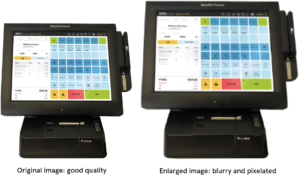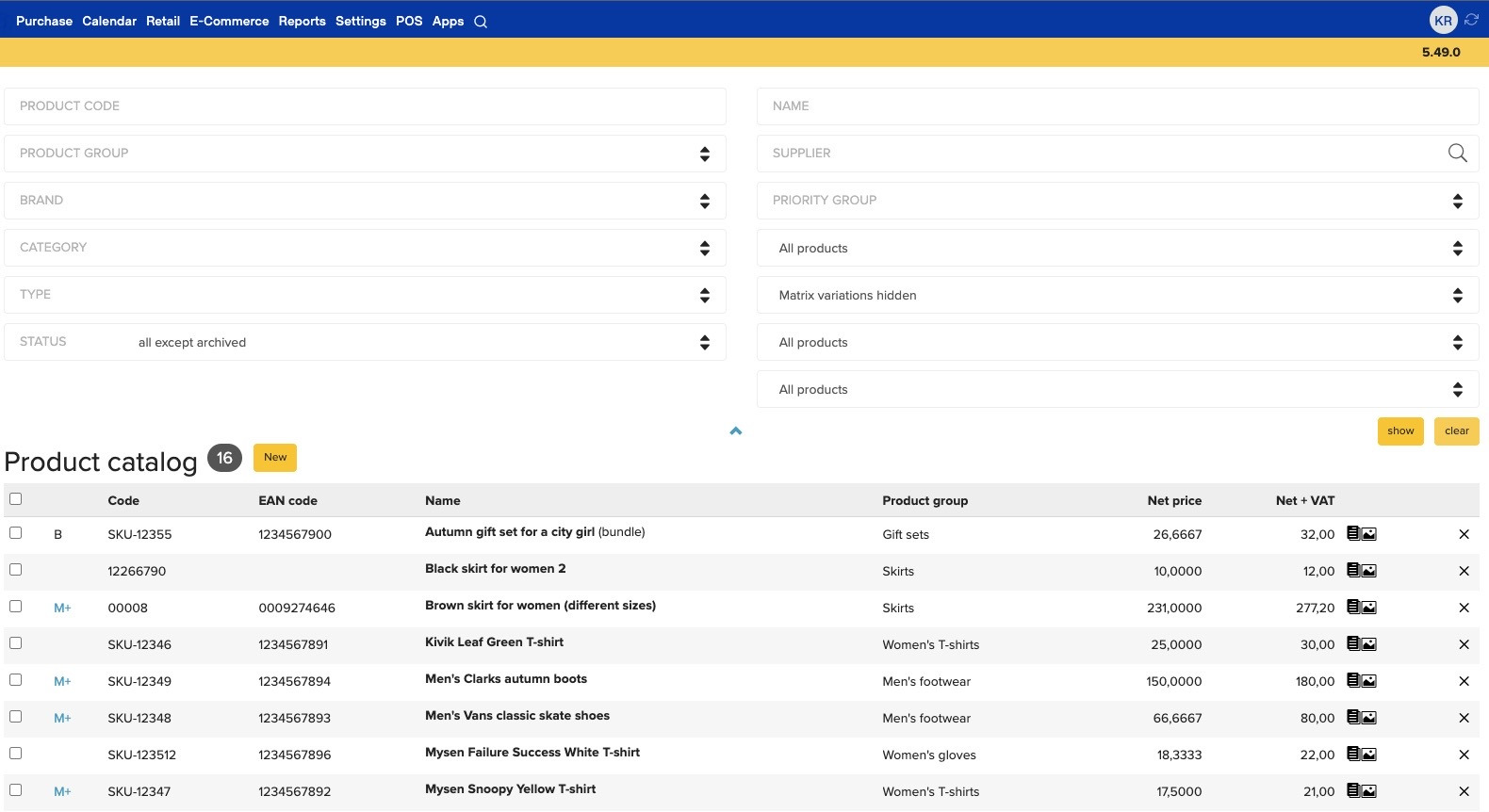We all know that retail is moving online. E-commerce presents a great sales opportunity for retailers moving their brick-and-mortar shop to the web and brand new online businesses alike.
However, it’s not enough to just create a webshop. The most successful retail webshops are optimized to reflect their products, brand, and customer interests. It’s an important part of the digital sales process.
Think about it: when you search for “clothing store,” you’ll get tons of search results. Have you ever wondered why certain websites are the top 3 search results, while others are listed all the way on page 28?
That’s because those top companies did a great job optimizing their webshop! This is done through SEO tactics, also known as “search engine optimization.”
There are plenty of reasons to strive for an optimized webshop:
- Boost store performance
- Improve webshop visibility and reach
- Convert viewers into buyers
- Minimize cart abandonment
With thousands of webshops out there, you need to do everything that you can to rank your store towards the top of those search engine pages. Webshop optimization builds up your webshop’s domain authority, which is a fancy way of saying it will improve your chances of moving your webshop to the front page of Google.

We cover a few ways you can boost your webshop rankings, including:
- Keyword research
- Webshop titles and descriptions
- Image optimization
ERP downtime is the best time to beef up your webshop. Not only will you have more time to optimize your shop, but your business is likely already in a position where it’s relying on online sales.
While webshop optimization can be an extremely in-depth process (there are entire careers dedicated to the job!), we’re here to help you build a high performing webshop.
Keywords
The first step to optimizing your webshop is to identify and target keywords.
What are keywords?
Keywords are words and phrases that allow people to find your website or webshop.
Say you’re searching the web for “women’s cropped sweatshirt.”
Shops that frequently mention the words “apparel” or “clothing” are much more likely to appear on a Google search, than, say, a pet shop. That’s because an online clothing shop probably uses the words “apparel” and “clothing” fairly often throughout their webstore.
To figure out what keywords you want associated with your webshop, you may want to consider the following categories:
- Brand
- Location
- Customer purchasing intent
- Types and use of products
Good starting examples might be “golf apparel,” “children’s shoes,” or “winter clothing.”
Stores with wide varieties of products and customer types might think it’s a good idea to target as many keywords as possible. In actuality, it’s wiser to aim for a well-thought-out, smaller subset of keywords for your e-commerce shop.
Identifying and narrowing down webshop keywords
To narrow down your keyword search, you’ll want to shoot for keywords more specific to your business. A great way to do this is to target long tail keywords.
Long tail keywords are phrases, rather than single words. They capture the intent of the buyer, improving the chances that they’ll make a purchase at your webshop.
Examples of long tail keywords:
- “Where to buy vegan clothes”
- “Comfortable wedge heels”
- “Jeans with real pockets”
As mentioned above, it’s bad practice to try and rank for too many keywords. If there are too many conflicting keywords in your webshop, search engines won’t be able to hone in on anything specific, and your store likely won’t be a Google first-pager.
Each page of your webshop, for example, should not target more than 3-4 keywords.
Not sure where to start?
If your website is linked to Google Analytics, there’s a keyword planner tool that can help you figure out the best keywords for your webshop. Ahrefs or SEMRush are other great alternatives.
It’s okay if you don’t have high-end marketing tools! You can get creative with your keyword research. Search for various phrases, products, and industries on the web and see what comes up. Competitors are a great source of inspiration, too!
How to rank your webshop for important keywords
Now that we have a better idea of what kind of buyers you want to find and shop at your e-commerce site, it’s time to fill your webshop with those keywords.
There are a few different ways that you can inject your e-commerce shop with keywords:
- Webpage titles
- Webpage descriptions
- Images
Depending on the level of your e-commerce platform subscription, you’ll have access to varying levels of webpage SEO tools.
These will provide you with the means to optimize your webpages and images. We’ll provide you with tips to make the most out of those tools.
Before we begin, it’s important to note that you should never spam any page with repetitive keywords.
Search engines are smart. They prefer natural language. A webpage that contains the words “organic pet food” several times in a sentence will not perform well.
Try to sneak in those keywords where they’re relevant (without sounding like a spam bot) and your webshop will be just fine.
Titles and descriptions
Each page of your webshop should have a relevant title and description that ideally contain keywords you want to rank for.

Descriptions may also be referred to as “meta description” in your e-commerce platform.
A good title should be 50-60 characters long, while a good description should be 155–160 characters long. Anything larger may be cut off by the search engine, especially for mobile viewers.
There are two different types of titles and descriptions that you’ll need to take into consideration:
- Regular webpage
- Product pages
Regular pages in your webshop will be your homepage, the contact us page, blog posts, or even category pages (such as “accessories”). Including the name of your business in the title of these pages is usually a good idea.
Product pages refer to the individual page of a product for sale. For example, if a customer is on the webpage that enables them add a shirt or a pair of sneakers to their virtual shopping cart.
For product pages, you’ll want the title and descriptions to describe the product for sale. Maybe your description will include information on the product’s style, design, materials, or color. You might include sizes, or if the product is intended for adults vs children.
There are thousands of ways to name your product descriptions. Feel free to get creative with them, just be sure to include those relevant product keywords!

You’ll notice in the above photo that Google bolds the terms in the product description that the user searched for. The webpage’s breadcrumb trail also contains relevant keywords! These are represented in Erply as your product groups.
You can start optimizing product descriptions right from your Erply account by filling out the Product short description and Product long description fields. Our e-commerce integration tools allow you to easily transfer product descriptions in bulk from your Erply account to your webshop.
Other places to add keywords
Your e-commerce platform will provide you with many text-based tools to add keywords to your webshop. Many of these can be explored in greater detail, but we’ll gloss over them to give you basic webshop optimization inspiration.
URLs
Try to make your web URLs as helpful to the customer as possible by adding product keywords. This doesn’t just improve webshop optimization, it can help customers easily navigate your product groups.

Remember, your Erply product groups can be imported over into your webshop. Your current Erply product group structure might already be a great starting point for your webshop URLS!
Out of stock items
Depending on the product, you may want to simply mark these as “out of stock” rather than closing their pages via your e-commerce platform.
Doing so keeps those keywords associated with your webshop (again, this might depend on the product) and creates a better customer experience by improving visibility.
Blogging
Blogs — just about everyone is doing it. No matter what website you’re on, it’s likely that they have a blog of some sort.
That’s because blogging represents an opportunity to add long tail keywords to your website. It’s also worth noting that search engines prefer websites that contain helpful content.
An easy way to get started is to write about store updates, lookbooks, or highlight product promotions, both of which can be used to include target keywords.
Image optimization
Webpage text isn’t the only thing you should focus on when optimizing your webshop. Images are also an extremely important factor, and they can also be used to help you rank for those target keywords!
Images in your webshop should be:
- Properly sizes
- Properly named
- Contain meaningful alt text
Product images range from your logo and homepage designs to the product images that appear when a customer is shopping at your webshop.
We know this might initially seem like a lot of work. Not only do you need to upload all of these photos, but you need to optimize them, too? This is especially true for if you’re selling hundreds of products, or matrix products with multiple variations.
Luckily, Erply’s importer tools take some of the manual work out of uploading and optimizing your images. It’s likely that your e-commerce platform will assist you with some of the work, too!
You don’t need to implement all of these changes at once, either. If it’s easier, try optimizing your webshop’s images in batches during different periods of store downtime.
Sizing your images
You want your webshop images to be high quality, so they can’t be too small. At the same time, images that are too large will hurt your webshop loading speed, which will hurt your search engine rankings.
It’s a paradox that we’ll help you work around.
Each e-commerce platform has its own image sizing guides designed to ensure your webshop contains images that you, your customers, and internet search engines can all agree on.

For example, Shopify accepts photos that are as large as 4472 x 4472 pixels but recommends uploading images that are 2048 x 2048 pixels. On the other hand, WooCommerce gives a minimum file recommendation at 800×800 pixels to ensure photos are good viewing quality.
Along with internal image sizing guidelines, your e-commerce platform may even help you resize images when needed.
Naming your image file
The file name of your image should include keywords that you want to rank for.
There are plenty of ways you can name your images that will boost the performance of your webshop. You may want to include your company name if it’s a branded item, or the city of your store’s location. Basic words explaining what a product is works great, too.
Image name examples:
- Good: red-cropped-sweatshirt
- Good: retail-NY-YourStoreName
- Good: YourStoreName-logo
- Bad: screenshot092364
Important! Instead of using spaces, use the dash symbol, also known as the minus sign “-”
Search engines have an easier time reading the dash symbol, and the whole purpose of webshop optimization is to make a search engine-friendly e-commerce experience!
When exporting product images into your webshop, the image name is usually found under the “src” field. This derived from the HTML tag to load an image on a page: <img src=”your-file-name-here.jpg”>
If you’re manually moving images into your webshop, you can rename them using your computer’s file explorer program (the Finder application in Apple devices).
Image alt text
What is alt text?
Alt text is a small description used to describe an image. If for some reason a webshop customer is unable to open images, an image’s alt text will display instead.

If somebody searches a phrase on the web that matches one of your image’s alt text, there’s a chance that your webshop or product photos will show up as a related image (The likeness depends on the relevance of the search, your webshop’s level domain authority, as well as other factors).
That person might click on your image, then will be directed to your webshop. In short, image optimization also increases the odds that potential customers will stumble upon your shop.
Concluding this webshop optimization lesson
We’ve covered the basics of webshop optimization, but remember that there are plenty of other steps you can take ranging from backend coding to frontend design. You can dive deeper into each of the e-commerce topics listed in this guide, too.
Be sure to consider e-commerce optimization when integrating your Erply account with a Shopify or WooCommerce webstore to maximize store performance.
Remember, e-commerce builder services like Inventory.com can be used to build and optimize your existing webshop, or lay out the groundwork so you can start your webshop off on the right foot.
Sign Up









